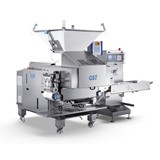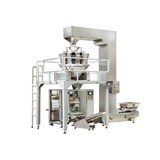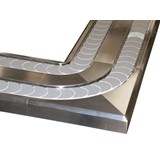Refrigerated display cabinets play a vital role in the food and beverage industry, providing an effective means to showcase and preserve perishable products. In recent years, there have been significant innovations in this field, driven by the need for energy efficiency, sustainability, and enhanced product visibility. This article explores the latest trends and future developments in refrigerated display cabinets, highlighting the advancements that are shaping the industry.
Overview of the Latest Advancements in Refrigerated Display Cabinet Technology
Refrigerated display cabinets have undergone significant advancements in recent years, revolutionizing the way perishable products are showcased and preserved in the food and beverage industry. These innovations are driven by the increasing demand for energy efficiency, sustainability, and improved product visibility. In this article, we will explore the latest trends and developments in refrigerated display cabinet technology that are shaping the industry.
1. Smart Technologies and Connectivity
One of the most notable advancements in refrigerated display cabinets is the integration of smart technologies and connectivity. With the rise of the Internet of Things (IoT), these cabinets can now be equipped with sensors and connected to a network. This connectivity allows for real-time data collection and analysis, enabling store owners and operators to monitor temperature fluctuations, manage inventory, and receive alerts in case of any issues or maintenance requirements.
2. Energy Efficiency and Sustainability
Energy efficiency and sustainability have become key focal points in the development of refrigerated display cabinets. Manufacturers are incorporating advanced insulation materials, energy-efficient compressors, and LED lighting systems to reduce power consumption. Additionally, there is a growing shift towards using natural refrigerants with lower environmental impact, such as hydrocarbons or CO2, which have lower global warming potential and ozone depletion potential compared to traditional refrigerants.
3. Enhanced Product Visibility and Presentation
Innovations in display cabinet technology have greatly enhanced product visibility and presentation. Advanced lighting solutions, such as LED strips with adjustable color temperature, create an appealing and visually engaging display. Transparent doors and anti-fogging technologies ensure clear visibility of products by preventing condensation. Moreover, customizable shelving options and modular designs allow retailers to showcase their products in unique and attractive arrangements, capturing the attention of customers.
4. Optimization of Space Utilization
Optimizing space utilization is crucial, especially in retail environments where floor space is limited. To address this challenge, manufacturers have developed compact and space-saving refrigerated display cabinets. These cabinets utilize adjustable shelves, vertical stacking options, and sliding doors to maximize storage capacity without sacrificing functionality. By efficiently using available space, retailers can display a wide range of products while maintaining an organized and visually appealing layout.
5. Integration of Data Analytics
Data analytics plays a significant role in the management of refrigerated display cabinets. By collecting and analyzing data on temperature, energy consumption, and product performance, retailers can gain valuable insights into their operations. Predictive analytics can be leveraged to optimize temperature settings, prevent stockouts, and improve overall efficiency. Furthermore, data-driven maintenance schedules help identify and address issues proactively, minimizing downtime and extending the lifespan of the cabinets.
6. Improved Food Safety and Preservation
Food safety and preservation are critical concerns in the food industry. Refrigerated display cabinets now incorporate advanced features to address these challenges. Intelligent temperature control systems maintain optimal temperature levels, preventing food spoilage and bacterial growth. Additionally, humidity control mechanisms and efficient air circulation systems help preserve product freshness and extend shelf life, ensuring that customers receive high-quality and safe products.
7. Customization and Aesthetics
Refrigerated display cabinets are becoming increasingly customizable, allowing retailers to tailor the design and layout to their specific needs. Manufacturers offer a wide range of options for shelving, lighting, and aesthetics, enabling retailers to create a unique and brand-aligned display. By customizing the cabinets, retailers can enhance the overall shopping experience and effectively showcase their products, ultimately attracting more customers and driving sales.
Introduction to Smart Features in Refrigerated Display Cabinets: Remote Monitoring and Temperature Control
In the ever-evolving landscape of refrigerated display cabinets, smart technologies have emerged as game-changers, revolutionizing the way these cabinets are managed and operated. With the integration of remote monitoring and advanced temperature control systems, refrigerated display cabinets have become more efficient, reliable, and capable of ensuring optimal conditions for perishable products. This article provides an introduction to these smart features and their significant impact on the food and beverage industry.
-
Remote Monitoring: Real-Time Insights and Control
Remote monitoring has transformed the way retailers and operators manage refrigerated display cabinets. By leveraging Internet of Things (IoT) technologies, these cabinets can now be connected to a centralized system that provides real-time insights into their performance. Through a user-friendly interface, store owners and operators gain access to crucial information such as temperature readings, energy consumption data, and system alerts. This remote monitoring capability enables proactive management, as any deviations from optimal conditions can be quickly identified and addressed, preventing potential damage to the stored products.
The remote monitoring system allows for seamless connectivity between the cabinets and the control center, providing operators with control over various aspects of cabinet operation. Parameters such as temperature settings, humidity levels, and lighting can be adjusted remotely, eliminating the need for manual intervention on-site. This level of control ensures consistent and reliable performance, optimizing product quality and reducing the risk of spoilage.
-
Advanced Temperature Control: Precision and Stability
Temperature control is of paramount importance when it comes to preserving the freshness and quality of perishable products. Smart refrigerated display cabinets incorporate advanced temperature control systems that offer precision and stability. These systems utilize sensors and algorithms to continuously monitor and adjust the internal temperature, maintaining it within the desired range.
The intelligent temperature control systems are designed to be highly accurate, minimizing temperature fluctuations that can adversely affect the stored products. They ensure a stable and consistent environment, allowing for optimal preservation of perishable items such as fresh produce, dairy products, and meats. By providing precise temperature management, smart refrigerated display cabinets help to extend the shelf life of products and reduce wastage, enhancing both operational efficiency and profitability.
-
Benefits and Implications
The introduction of smart features like remote monitoring and advanced temperature control has brought forth numerous benefits and implications for businesses in the food and beverage industry. Some key advantages include:
-
Enhanced Product Safety and Quality:
Maintaining proper temperature conditions is vital for ensuring food safety and preserving product quality. The remote monitoring and temperature control capabilities of smart refrigerated display cabinets significantly reduce the risk of temperature deviations, ensuring that perishable items remain within the safe temperature range. This enhances consumer confidence and reduces the likelihood of product recalls or customer complaints due to compromised quality.
-
Improved Operational Efficiency:
Smart features streamline operational processes and reduce the need for manual interventions. Remote monitoring eliminates the requirement for constant physical checks of temperature and other parameters, allowing store staff to allocate their time and resources more effectively. Furthermore, the ability to remotely adjust settings optimizes energy consumption, leading to cost savings and improved overall efficiency.
-
Data-Driven Decision-Making:
The integration of smart technologies generates a wealth of data regarding cabinet performance and product conditions. This data can be analyzed to gain valuable insights into trends, patterns, and potential issues. By leveraging this information, businesses can make informed decisions regarding inventory management, maintenance schedules, and even marketing strategies.
Discussion on Eco-Friendly Refrigeration Systems and Sustainability Initiatives
In the quest for a greener and more sustainable future, the food and beverage industry has been actively seeking eco-friendly solutions to reduce its environmental impact. Refrigerated display cabinets, being essential components of this industry, have undergone significant advancements to embrace sustainability. In this article, we will discuss eco-friendly refrigeration systems and the sustainability initiatives that are driving positive change in the industry.
-
The Need for Eco-Friendly Refrigeration Systems
Traditional refrigeration systems have been associated with significant environmental concerns, primarily due to the use of synthetic refrigerants with high global warming potential (GWP) and ozone depletion potential (ODP). These refrigerants, such as hydrofluorocarbons (HFCs), contribute to climate change and pose risks to the ozone layer. Recognizing the need for more sustainable alternatives, the industry has been actively pursuing eco-friendly refrigeration systems.
-
Transition to Natural Refrigerants
One of the key sustainability initiatives in refrigeration systems is the transition from synthetic refrigerants to natural refrigerants. Natural refrigerants, such as hydrocarbons (HCs) and carbon dioxide (CO2), offer several environmental benefits. They have negligible or zero ozone depletion potential and significantly lower global warming potential compared to their synthetic counterparts. Natural refrigerants are also more energy-efficient, contributing to reduced carbon emissions during operation.
-
Energy Efficiency and Green Certifications
Energy efficiency is a crucial aspect of eco-friendly refrigeration systems. Manufacturers are increasingly focusing on developing energy-efficient display cabinets to reduce power consumption and carbon footprint. These cabinets incorporate advanced insulation materials, energy-efficient compressors, and LED lighting systems. Energy-efficient refrigeration systems not only minimize environmental impact but also result in cost savings for businesses.
Furthermore, sustainability initiatives have led to the establishment of green certifications and standards for refrigerated display cabinets. These certifications, such as Energy Star and LEED (Leadership in Energy and Environmental Design), provide recognition to cabinets that meet specific sustainability criteria. Compliance with these certifications helps businesses showcase their commitment to environmental stewardship and attract environmentally conscious customers.
-
Waste Reduction and Circular Economy
Sustainability initiatives in refrigeration systems also focus on waste reduction and the promotion of a circular economy. Manufacturers are exploring ways to reduce material waste during the production of display cabinets and encourage recycling and responsible disposal of components at the end of their life cycle. Additionally, companies are implementing strategies to extend the lifespan of refrigeration systems through regular maintenance and upgrades, minimizing the need for premature replacements.
-
Innovative Cooling Technologies
Advancements in cooling technologies play a vital role in eco-friendly refrigeration systems. Companies are developing innovative solutions to improve energy efficiency and reduce environmental impact. Some examples include:
- Adiabatic Cooling: Adiabatic cooling systems use evaporative cooling techniques to enhance energy efficiency by reducing the workload on compressors. These systems utilize the evaporation of water to cool the air inside the cabinets, thereby reducing the energy required for cooling.
- Thermoelectric Cooling: Thermoelectric cooling technology utilizes the Peltier effect to transfer heat, offering a more energy-efficient and environmentally friendly alternative to traditional refrigeration methods. It eliminates the need for harmful refrigerants and minimizes noise pollution.
The innovations in refrigerated display cabinets have significantly transformed the food and beverage industry, offering improved efficiency, sustainability, and enhanced product visibility. With the integration of smart technologies and connectivity, remote monitoring capabilities have revolutionized the management of these cabinets, providing real-time insights and control. Energy efficiency and sustainability have been prioritized through the use of advanced insulation materials, energy-efficient compressors, and natural refrigerants. Moreover, advancements in lighting, shelving options, and modular designs have enhanced product visibility and presentation, while optimizing space utilization. The integration of data analytics enables businesses to make informed decisions, while improved food safety and preservation features ensure high-quality products. Furthermore, customization options allow retailers to create unique and brand-aligned displays, attracting more customers. Overall, these innovations in refrigerated display cabinets are driving positive changes in the industry, promoting a greener and more sustainable future.



-160x160-state_article-rel-cat.png)






-160x160-state_article-rel-cat.png)














